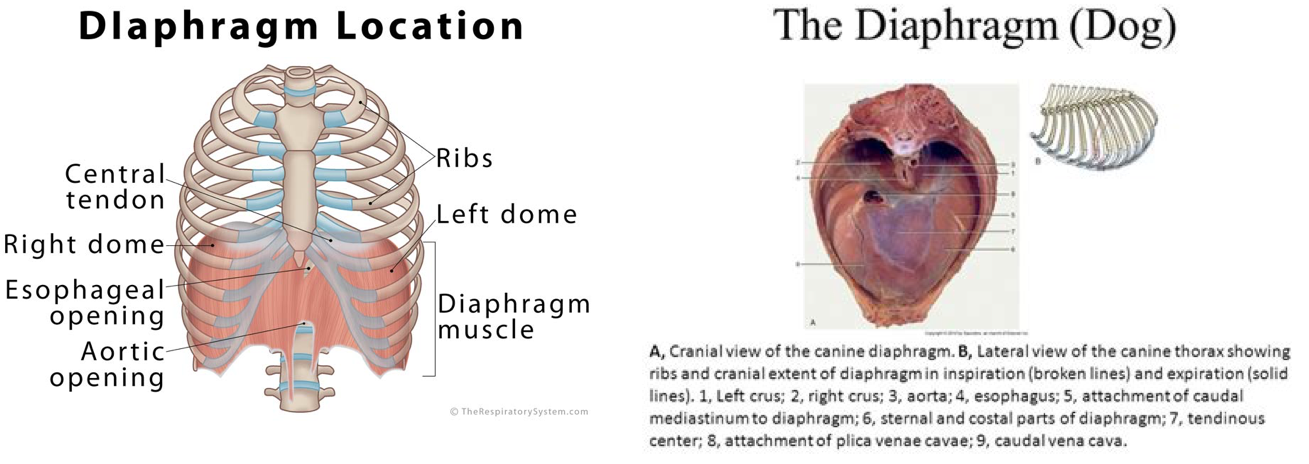Laurie's Blogs.
Apr 2019
Thicken your diaphragm

You’ve got the balls, and balance equipment. You’ve got some blocks. You’ve got plans. And, you’ve heard that you should be training the dog’s core! Now when we think of core, most of our brains automatically go to the abdominal muscles. However, a recent research paper tells us that perhaps we should be acknowledging the effects of stability training on the diaphragm!
Dülger, E, Bilgin, S, Bulut, E et al. The effect of stabilization exercises on diaphragm muscle thickness and movement in women with low back pain Journal of Back and Musculoskeletal Rehabilitation, vol. 31, no. 2, pp. 323-329, 2018.
BACKGROUND: Diaphragm is an important component of spinal stability. In presence of low back pain, there may be some alterations in this muscle like other muscles that are responsible for lumbal stabilization.
OBJECTIVE: This study aims to assess the effects of stabilization exercises on diaphragm muscle thickness and motion along with lumbopelvic stability.
METHODS: Twenty-one women with low back pain participated in the study. Stabilization exercises including motor control training were performed on treatment group (n = 11). In control group (n = 10), strentghening exercises were peformed for back muscles, abdominal muscles and hip muscles. The patients underwent a total of 30 sessions of treatment, 3 days in a week for 10 weeks. The diaphragm muscle thickness and motion was evaluated using ultrasound (US), and lumbopelvic stability was evaluated using lumbopelvic stability tests.
RESULTS: After the treatment, in the treatment group, increase in diaphragm thickness and improvement in lumbopelvic stability were statically significant (p < 0.05). However, there were no significant changes in diaphragm motion in both groups (p > 0.05).
CONCLUSIONS: As a result, stabilization exercises increase diaphragm muscle thickness and improve lumbopelvic stability in women with low back pain. Therefore, stabilization exercises should be considered as a part of the treatment program in low back pain.
I find this paper fascinating. In the physical therapy field, we acknowledge the ‘CORE’ as being the abdominals, the pelvic floor, the diaphragm, as well as the latissimus, and epaxials. Thus, making up a canister of muscles and a whole cylinder that keeps the body from crumpling around the middle. However, even though we know this, we don’t really give thought to how the diaphragm is a key contributor!
Now just think about the diaphragm for a minute! So, if stabilization exercises (core training) was able to improve diaphragm thickness and in turn lumbosacral stability… what else improves? Breathing? Thorax mobility and stability? Front limb movement? Rear limb movement? My head starts to ponder that it might be particularly useful for senior dogs, or female dogs with urinary incontinence, and of course dogs with back pain!
So… on that note, think about the diaphragm this week!
Cheers! Laurie


